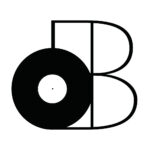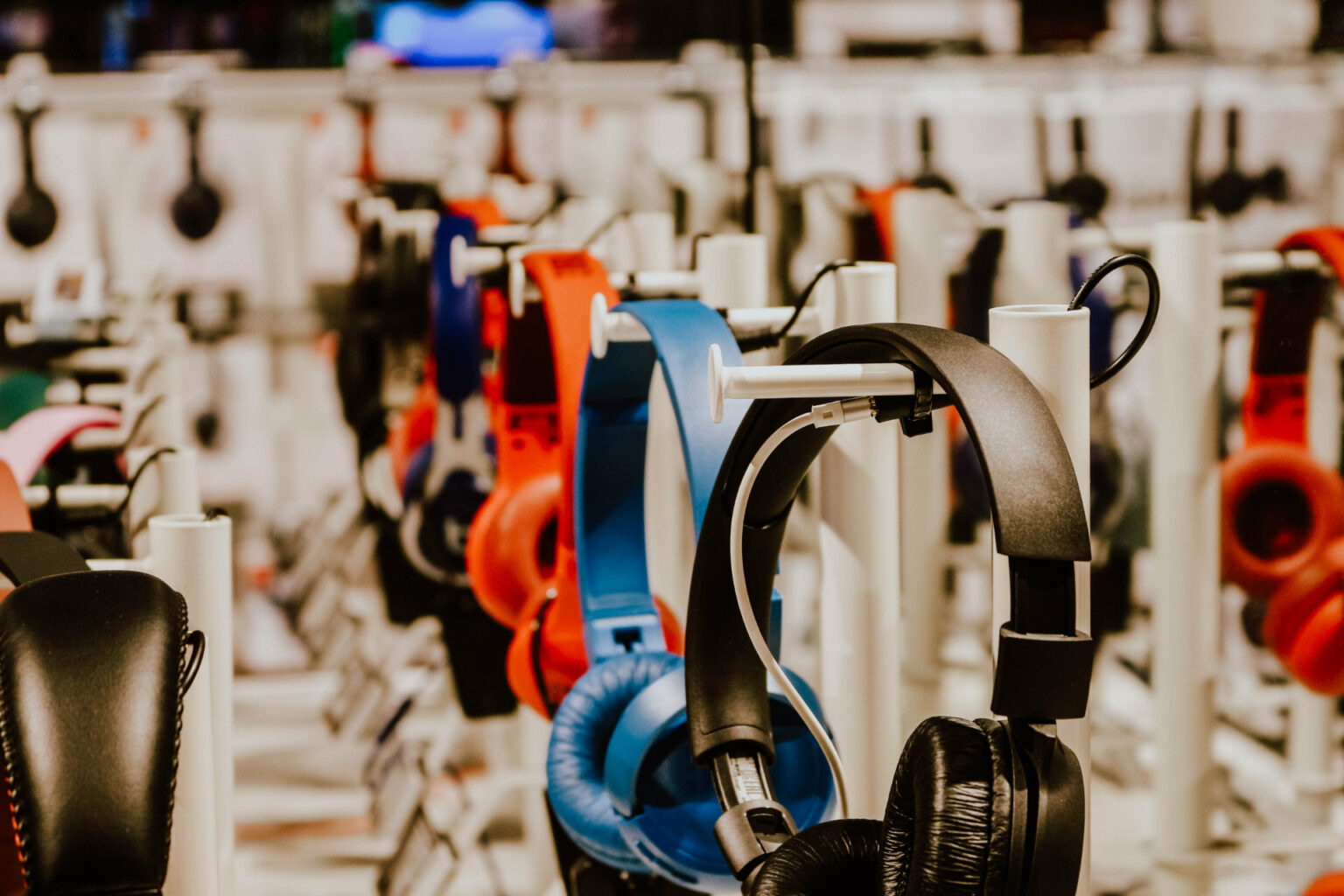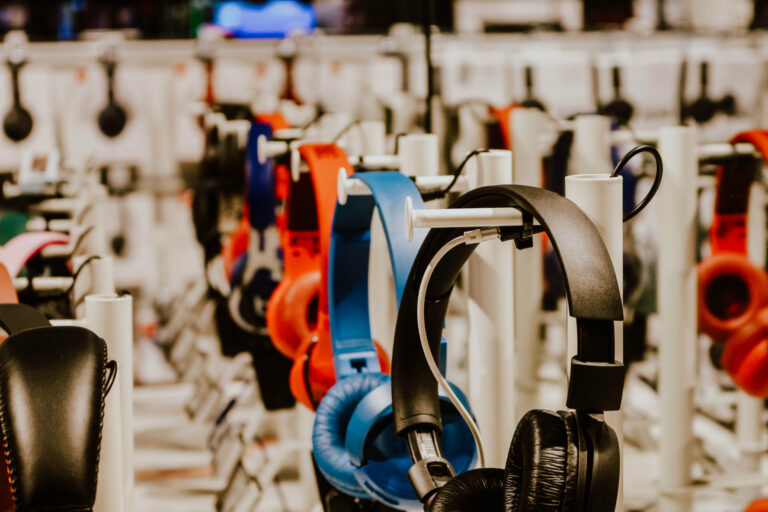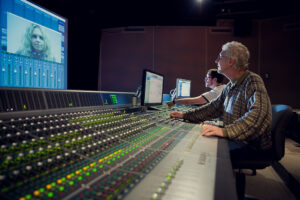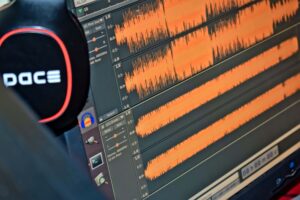Recently, I decided to purchase a new pair of headphones for mixing and mastering purposes. As it turns out, the headphones I had been using (for over 10 years) weren’t optimal for mixing and mastering. The truth is that when we compare closed back vs open back headphones, there isn’t one that’s better than the other, BUT… They DO have different utilities!
Once I understood the difference between closed back and open back headphones, it became clear to me… The headphones I had been using weren’t giving me accurate results when I was mixing and mastering, but why? As it turns out, closed back headphones weren’t ideal for mixing and mastering so I needed a pair of open back headphones. However, as we discuss the major differences between these two types of headphones, you’ll understand why open back headphones aren’t the best for recording purposes. Can you live with only one of these types? Do you need both? Let’s find out!
- Closed Back Headphones
- Open Back Headphones
- What about semi-open back headphones?
- Which one should I buy?
- Summary: Closed Back vs Open Back Headphones
Closed Back Headphones
The headphones of choice for sound mixers/recordists and recording artists.
What are closed back headphones GOOD for?
- Recording instruments/vocals in the studio (because of “sound isolation”)
- Sound mixing/recording for TV and film (especially outdoors)
- Working on projects in noisy environments
What are closed back headphones NOT GOOD for?
- Mixing and mastering (worst “soundstage”)
- Listening for extended periods of time
Alright, we now understand WHO and WHAT closed back headphones are for.
However, I just wanted to elaborate on a few of these points. I also wanted to go over some of the terminology you may not necessarily be familiar with.
For example, “sound isolation” refers to the headphones’ ability to attenuate environmental noise. It’s optimal on closed back headphones because this literally like covering your ears with a pair of cans.
However, the sound isolation will be highest with closed back headphones that are AROUND-EAR (circumaural).

You’ll also find closed back headphones that are OVER-EAR and ON-EAR.

Most people refer to over-ear headphones as circumaural (around-ear), but there’s a difference. Just compare the Sennheiser HD 280 PROs (around-ear) with the AKG K92s (over-ear) if you don’t believe me.
You’ll notice that the Sennheiser HD 280 PROs really wrap around your ear.
I also used the term “soundstage” and expressed that closed back headphones are lacking in this area.
Basically, closed back headphones (being closed-off) are the worst at reproducing sound naturally. The term soundstage refers to the “acoustic space” which is created inside the headphones.
In other words, closed back headphones sound LESS realistic than open back headphones.
You’ll be learning why in the next section!
Open Back Headphones
The headphones of choice for music producers and audiophiles.
What are open back headphones GOOD for?
- Mixing and mastering (best “soundstage”)
- Working on projects in soundproofed environments
- Listening to music the way it was meant to be heard
What are open back headphones NOT GOOD for?
- Recording in proximity to sensitive microphones (because of “sound leakage”)
- Listening in noisy/public areas (because of “sound leakage” AND poor “sound isolation”)
Great, now you know WHO and WHAT open back headphones are for!
The only NEW term I introduced in this section is “sound leakage”. That’ll serve as the perfect segway into explaining the main difference with open back headphones.
The reason that we experience sound leakage with open back headphones is because they are litterally open…

Maybe not COMPLETELY open, but just picture a pair of cans with some holes punched in.
These holes are reffered to as “vents” and allow some of the sound to escape. That basically means that someone sitting next to you could most likely hear your music.
It’s the advantage AND the disadvantage.
The reason this improves “soundstage” is because it sound more natural. Sound waves usually travel freely out in the open, not inside a vacuum (or a pair of cans).
It’s the perfect compromise of “intamacy” and “openess”.
However, you’ll never achieve the accuracy of an actual pair of reference monitors.
You’re comparing sound waves vibrating a slightly more open space versus your ENTIRE ROOM.
If you’re serious about accuracy though, you’ll want BOTH.
You’ll usually find open back headphones in the OVER-EAR category, but there are a few in the ON-EAR and AROUND-EAR categories. I personally go with over-ear in this case.
What about semi-open back headphones?
You’ll most likely also encounter semi-open back headphones on the market.
Is there really any significant different between open back and semi-open back?
Not really, but I’m sure you can deduce that semi-open back headphones are somewhat of a compromise between closed back and open back headphones.
The “sound isolation” and “sound leakage” is slightly improved.
However, I personally found that it’s still much closer to the open back feel than the closed back feel.
The AKG K240s are considered semi-open back…

If you want something in between, DON’T make the compromise. It’s impossible!
I’ll be explaining how you can get the best of both worlds in the next section. It’s worth noting, however, that semi-open back headphones are usually slightly less expensive than their open back counterparts.
Which one should I buy?
Are you feeling stuck?
Closed back or open back… Which one should I buy?
My personal answer to that question is BOTH. I think that many music professionals will agree with me.
There’ll be situations when you need closed back and others when you’ll need open back. However, if you really had to decided between the two, I’d start with closed back headphones.
The reason is you basically can’t go wrong with closed back headphones.
Sure, the “soundstage” might be lacking but that’s why you have reference monitors. Right?
I personally own one of each at the moment, but I am planning on purchasing more. As you develop your ear, you’ll begin to realize that there isn’t really one pair of headphones that does it all.
To start you off though, I’m going to recommend 2 sets of headphones depending on your budget…
However, you’ll most likely end up buying/selling MANY pairs of headphones during your life…
Summary: Closed Back vs Open Back Headphones
Nowadays, even the most affordable headphones can get the job done.
You’ll just need to know WHICH ONES are actually worth your money. That’s why I suggest starting with my recommendations if you’re completely new to this market.
It’s a myth that you need headphones that cost $500+ to be professional.
The thing is though… You can get a pair of really expensive closed back headphones that actually sounds almost identical to a bad pair of open back headphones (in terms of “soundstage”).
However, that’s not an excuse to rely on only one pair of headphones.
My honest opinion… You need at least TWO.
Just like the microphone market though, you’ll eventually find yourself SWIMMING in a collection of headphones. It’s completely normal, but sell some off every now and then.
Keep searching for what YOU like and forget about everyone else.
I’m curious though… Which headphones are you currently working and why?
I hope this article has finally cleared up the differences between closed back vs open back headphones. If you have any questions, feel free to leave them in the comments. Thanks!

